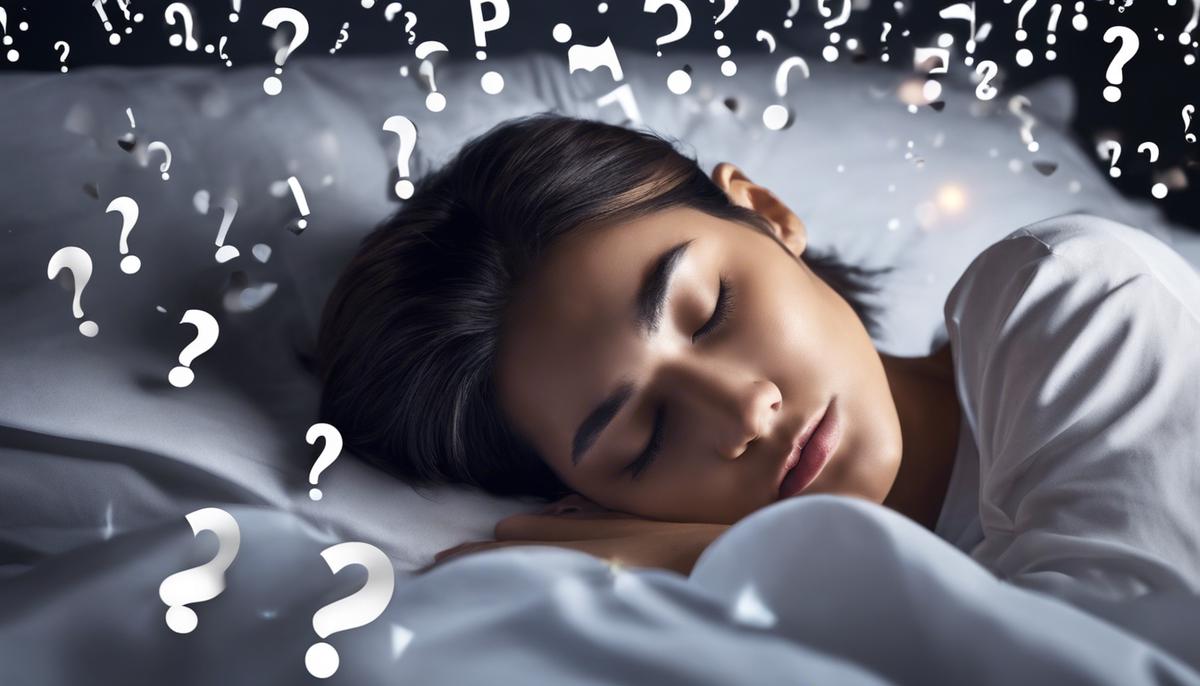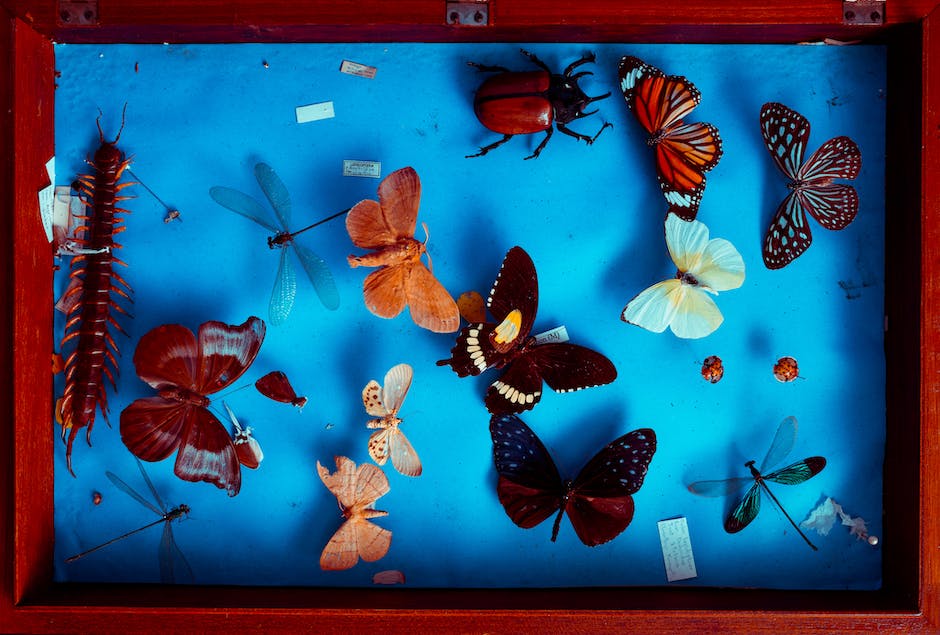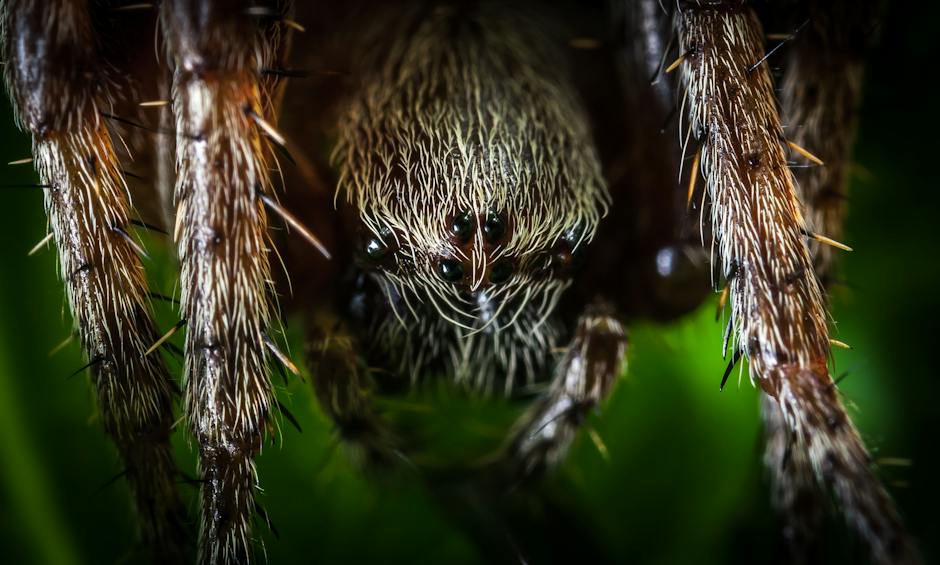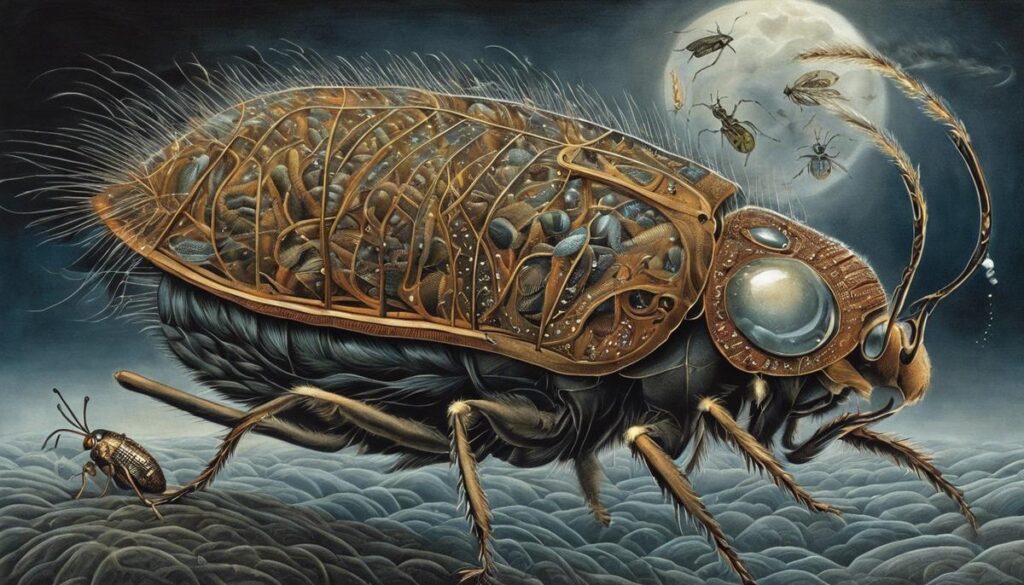From the shadowy corners of our subconscious, dreams weave tales that intertwine the mundane with the surreal, often leaving us to ponder their origins and meanings. Among the myriad dreamscapes that populate our slumbering minds, the unsettling vision of bugs crawling in our hair stands out as an especially vivid tableau, ripe for psychological dissection. This essay plunges into the depths of the unconscious, drawing on the psychoanalytical frameworks established by luminaries like Sigmund Freud and Carl Jung to decode the enigmatic symbolism of insects nestled in our tresses. It contrasts this interpretation against the tapestry of cultural and symbolic meanings ascribed to bugs in different societies while exploring the neuroscientific perspective on why such peculiar dream content may emerge from the complexities of our brain’s nocturnal activities. The curious interplay between dreams, stress indicators, and our waking lives is also scrutinized, laying bare the potential for these nocturnal narratives to reflect and influence our mental and emotional wellbeing.
Psychoanalytical Interpretation of Bugs in Hair Dreams
Within the realm of psychoanalytic theory, the interpretation of dreams has long served as a conduit to the unconscious mind, offering a tantalizing glimpse into the underlying thoughts and emotions that may not be readily accessible during wakefulness. Dreams concerning insects, particularly the image of bugs nestling within one’s hair, stand out as an area of psychological symbolism worthy of scrutiny.
From a Freudian perspective, one might consider the bug-infested dream imagery as representing invasive thoughts or anxieties that are “gnawing” at the dreamer’s peace of mind. Hair, often a symbol of one’s personal identity and sometimes linked with vanity, when associated with bugs in dream iconography, could reveal an individual’s fears of public perception and social contamination. The hair, a region of the body both visible to the observer yet felt by the individual, when populated by creeping entities, may signal deep-seated worries about personal reputation being compromised or an intrusion of privacy.
Jungian analysts, on the other hand, might view such dreams through the lens of the collective unconscious, interpreting these creepy-crawlies as archetypal manifestations of transformation and renewal, albeit in a form that may initially induce revulsion. The hair, serving as the dreamer’s crowning glory, when infested, might highlight the necessity for change in how the individual presents themselves to the world, suggesting a potential reevaluation of one’s persona. Archetypes, as universal symbols, infuse these dream bugs with a more profound significance, tying the individual’s experience to a shared human narrative where pests are associated with decay but also with the necessary decomposition that fosters new life.

Cultural and Symbolic Meanings of Bugs
Delving into the various cultural perspectives regarding the interpretation of insects in dreams, an interesting dichotomy emerges between interpretations of distaste and foreboding versus those of auspiciousness and prosperity. In some Eastern traditions, dreaming of bugs does not necessarily carry a negative connotation. For instance, within Chinese culture, insects such as crickets are historically revered as symbols of good fortune and courage, thus appearing in one’s dreams might be suggestive of impending success or a fortuitous turn of events.
Contrastingly, in several indigenous cultures across the globe, insects in dreams might be interpreted as guides or messengers. Often deeply connected with nature, these cultures may perceive certain bugs in dreams as omens or carriers of messages from the spirit realm. The specific interpretation can be highly contextual, often depending on the type of insect and the circumstances within the dream itself. For example, a dream of bees might be connected to communality and productive work, while a swarm of locusts could be a harbinger of necessary destruction that precedes regeneration.
This expansive array of interpretations underscores the rich tapestry of human belief and the enduring search for meaning even in the seemingly mundane. The persistent appearance of insects in the dreamscapes of diverse cultures invites a broader understanding of the human psyche, extending beyond the bounds of purely psychoanalytic interpretations. These cultural narratives offer a window into the myriad ways that dreams, particularly those involving the often maligned insect kingdom, continue to fascinate and provoke contemplation across the globe.

Neuroscientific Perspective on Dream Content
Transitioning our gaze to the insights provided by modern neuroscience, one finds an intricate tapestry woven from the threads of neuronal networks and brain chemistry. In the realm of dreams, especially those tinged with the unsettling motif of bugs claiming residence in one’s hair, neuroscience suggests such visions may represent neural responses to psychological stressors or concerns related to one’s environment.
While psychoanalytic thinkers have historically paddled in the rivers of symbolism, neuroscientists lace up their boots to step through the neurological underbrush. Dreams, they posit, could be the byproduct of the brain’s attempt at synthesizing and processing daily experiences, sensations, and emotions. This cerebral dance occurs predominantly in the Rapid Eye Movement (REM) stage of sleep, where the brain’s activity mirrors that of our waking hours. When one dreams of bugs entangled in hair, neurologists might speculate that the limbic system, particularly the amygdala, is involved. This brain region orchestrates emotional responses, including those linked to disgust or anxiety. Thus, a dream steeped in this imagery could be a manifestation of the dreamer’s concern over personal wellbeing or a reaction to ‘irritants’ in their daily life.
Furthermore, neuroscientific exploration hints at the potential for dreams to serve as rehearsals for coping with real-world challenges. The bizarre and often intense scenarios crafted in the theatre of the subconscious may be the brain’s method of strengthening the neural pathways necessary for problem-solving and emotional regulation. In the context of dreaming of insects in one’s hair, such imagery may invoke a mental scrimmage where one confronts disquietude or perceived threats to status or health, paving the way for more robust psychological resilience upon waking.
In closing, the landscape of dreams remains rich and dynamic through the lens of neuroscientific inquiry. While psychological interpretations often dip into the well of cultural and personal symbolism, neuroscience provides a different map—one charted through the electrical impulses and synaptic connections of the grey matter, giving us a glimpse into the commodious realm where our nightly narratives unfold.

Common Dreams and Stress Indicators
Moving beyond the symbology and neurological underpinnings of recurring dreams about insects entangled with one’s hair, we must consider the implications these dreams may have on an individual’s stress levels and mental health.
To establish a relationship between such dreams and psychological well-being, empirical studies often draw from established stress and anxiety frameworks.
Recurrent nightmares, including those featuring bugs in hair, have been correlated with increased stress, anxiety disorders, and in some cases, post-traumatic stress disorder (PTSD).
It is suggested that these distressing dreams may not only be symptomatic of latent concerns but could also act as contributors to the exacerbation of stress when individuals awake feeling distressed, their sleep quality compromised.
At the intersection of dream research and mental health, it has been observed that the content of dreams often mirrors the dreamer’s waking-life emotional states.
Thus, a dream inundated with bugs crawling within one’s hair could indicate an internalized feeling of loss of control or fear of infestation in one’s life.
Such imagery might resonate with feelings of entanglement in complicated situations in waking life, wherein the individual perceives a lack of agency comparable to the inability to rid oneself of pests such as bugs.
The frequency and intensity of these dreams can provide insights into the individual’s mental state.
However, this premise must be approached with caution, understanding that the causal relationship is not definitive and varies across different populations.
The integration of these findings with the broader context of an individual’s life experiences is paramount to derive a holistic understanding of the presented symptoms, demanding the careful interpretation of the clinician or researcher.
Closing the gap between such recurring dreams and therapy, cognitive-behavioral approaches to dream work suggest the potential for therapeutic interventions that target the content of the dreams themselves.
Techniques such as imagery rehearsal therapy (IRT) have proven effective for some in altering disturbing dream content and reducing the frequency of nightmares, thereby potentially alleviating associated stress and improving overall mental health.
This cognitive restructuring of the dream narrative allows individuals to engage with and transform their nightmares, potentially mitigating their stress responses and offering a unique avenue for introspection and emotional processing.
In conclusion, while the presence of bug-infested hair in dreams can signal underlying stress and mental health concerns, it is through the meticulous application of psychological practices that such manifestations can be unpacked and addressed.

As we have traversed the intricate landscape of dreams where bugs find harbor in human hair, we appreciate the rich tapestry of interpretations from psychoanalytic to cultural, and neuroscientific, affirming the multifaceted nature of such imagery in our unconscious life. Dreams, with their beguiling blend of reality and fantasy, continue to be a fountain of insight into our inner worlds, indicating that even the most disconcerting of narratives, like the presence of insects in hair, can be a compelling lens through which we may better understand the undercurrents of our mental and emotional states. Acknowledging that these nocturnal visions can also act as a barometer for our psychological health, it is imperative that we maintain an open dialogue with the deeper recesses of our minds, permitting the revelations that emerge in our dreams to guide us toward greater self-awareness and equilibrium.







